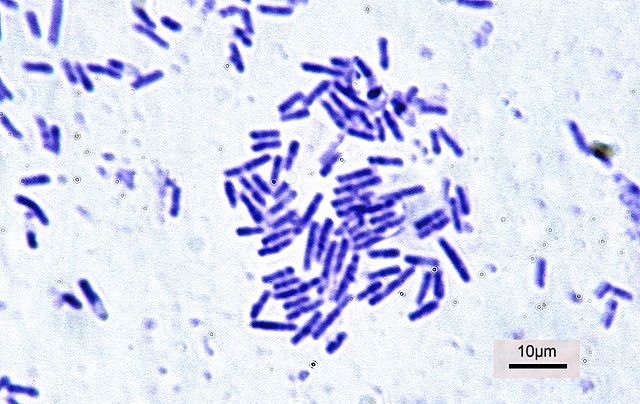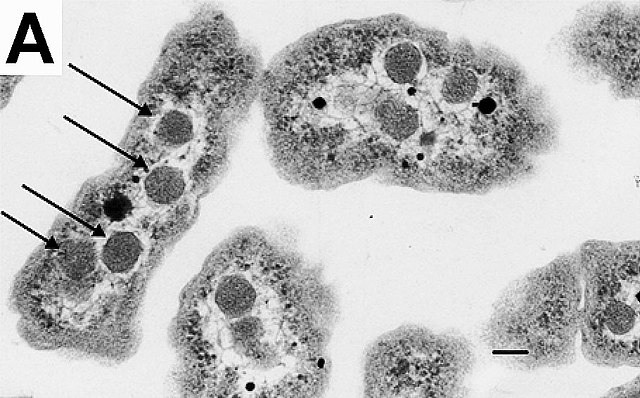A pilus is a hair-like appendage found on the surface of many bacteria and archaea. The terms pilus and fimbria can be used interchangeably, although some researchers reserve the term pilus for the appendage required for bacterial conjugation. All conjugative pili are primarily composed of pilin – fibrous proteins, which are oligomeric.
This figure depicts fimbriae adhesion. In this process the fimbriae of a bacterial cell (right) adhere to specific proteins, called receptors, found on the outer membrane of a host cell (left). They do this by a specific interaction between the receptors of the host cell and the perfectly matched adhesions found on the bacteria's fimbriae. This process of bacteria adhering to a host cell can result in the colonization of that host cell as more and more bacteria collect around it, and is integral to the continued survival of the bacteria, enabling them to infect tissues and entire organs.
Type IVa pilus machine architectural model
Bacteria are ubiquitous, mostly free-living organisms often consisting of one biological cell. They constitute a large domain of prokaryotic microorganisms. Typically a few micrometres in length, bacteria were among the first life forms to appear on Earth, and are present in most of its habitats. Bacteria inhabit soil, water, acidic hot springs, radioactive waste, and the deep biosphere of Earth's crust. Bacteria play a vital role in many stages of the nutrient cycle by recycling nutrients and the fixation of nitrogen from the atmosphere. The nutrient cycle includes the decomposition of dead bodies; bacteria are responsible for the putrefaction stage in this process. In the biological communities surrounding hydrothermal vents and cold seeps, extremophile bacteria provide the nutrients needed to sustain life by converting dissolved compounds, such as hydrogen sulphide and methane, to energy. Bacteria also live in mutualistic, commensal and parasitic relationships with plants and animals. Most bacteria have not been characterised and there are many species that cannot be grown in the laboratory. The study of bacteria is known as bacteriology, a branch of microbiology.

Bacteria
Rod-shaped Bacillus subtilis
An electron micrograph of Halothiobacillus neapolitanus cells with carboxysomes inside, with arrows highlighting visible carboxysomes. Scale bars indicate 100 nm.
Helicobacter pylori electron micrograph, showing multiple flagella on the cell surface






